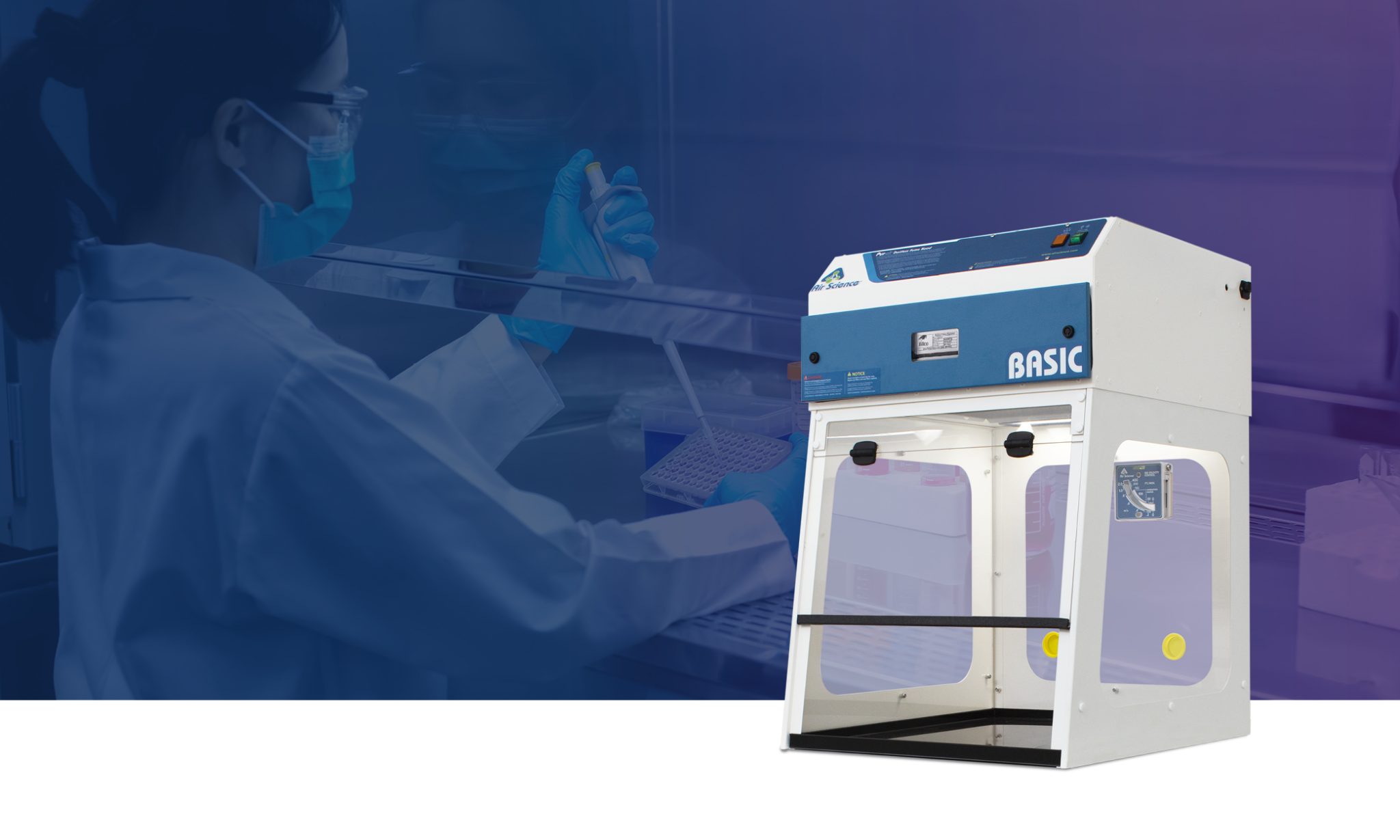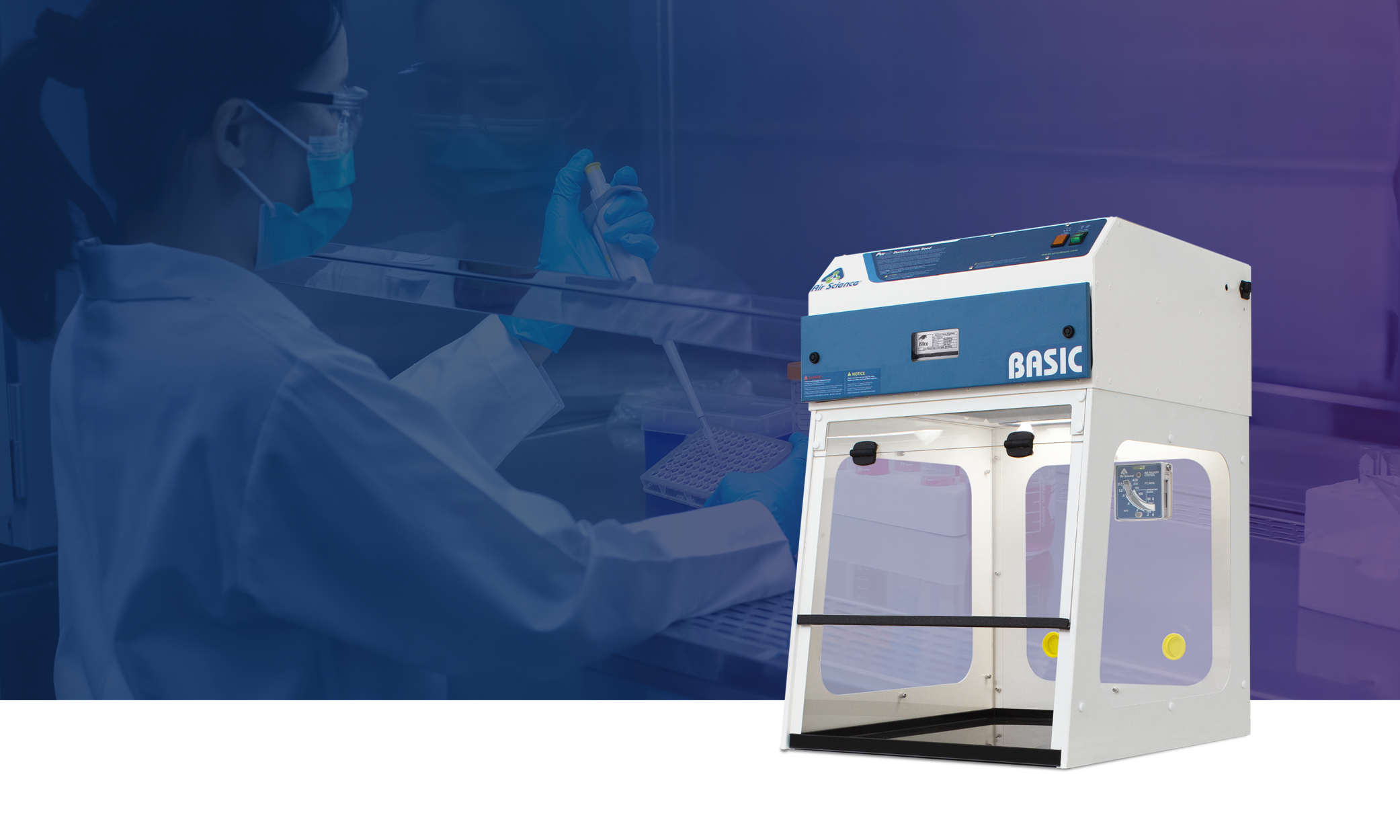
A fume cupboard is a piece of laboratory equipment that provides a controlled environment designed to contain and remove hazardous fumes or vapours generated during experiments or chemical processes. In ducted fume cupboards, air is pulled through ductwork and expelled outside the building. In a recirculating or ductless fume cupboard, the air is similarly pulled into the unit, but rather than being exhausted outside, it is purified using a filtration system.
Air Science® ductless cupboards utilise the Multiplex™ Filtration System, which consists of a pre-filter, main filter and optional safety filter to create a combination of chemical and physical architecture customized to each application. When optional HEPA or ULPA filters are used, ductless fume cupboards can also provide particulate protection. Fume cupboards are also called fume cabinets or fume hoods but should not be confused with biological safety cabinets (BSCs), which provide particulate protection but do not protect against chemical vapours unless equipped with an activated carbon filter (only available on select models).
Ductless fume cupboards offer several benefits compared to traditional ducted cupboards. Some of the advantages include:
- Flexibility & portability: Ductless fume cupboards can be easily installed in various locations within a laboratory without the need for complex ductwork. This allows for greater flexibility in lab design, layout and portability.
- Cost-effective: Ductless fume cupboards eliminate the need for expensive ductwork installation and maintenance. They also require less energy to operate, resulting in potential cost savings.
- Environmental friendliness: By eliminating the need for ductwork and reducing energy consumption, ductless fume cupboards contribute to a more sustainable laboratory environment.
Air Science manufactures a complete series of high-efficiency ductless fume cupboards designed to protect the user, the process and the environment from hazardous vapors and fumes

